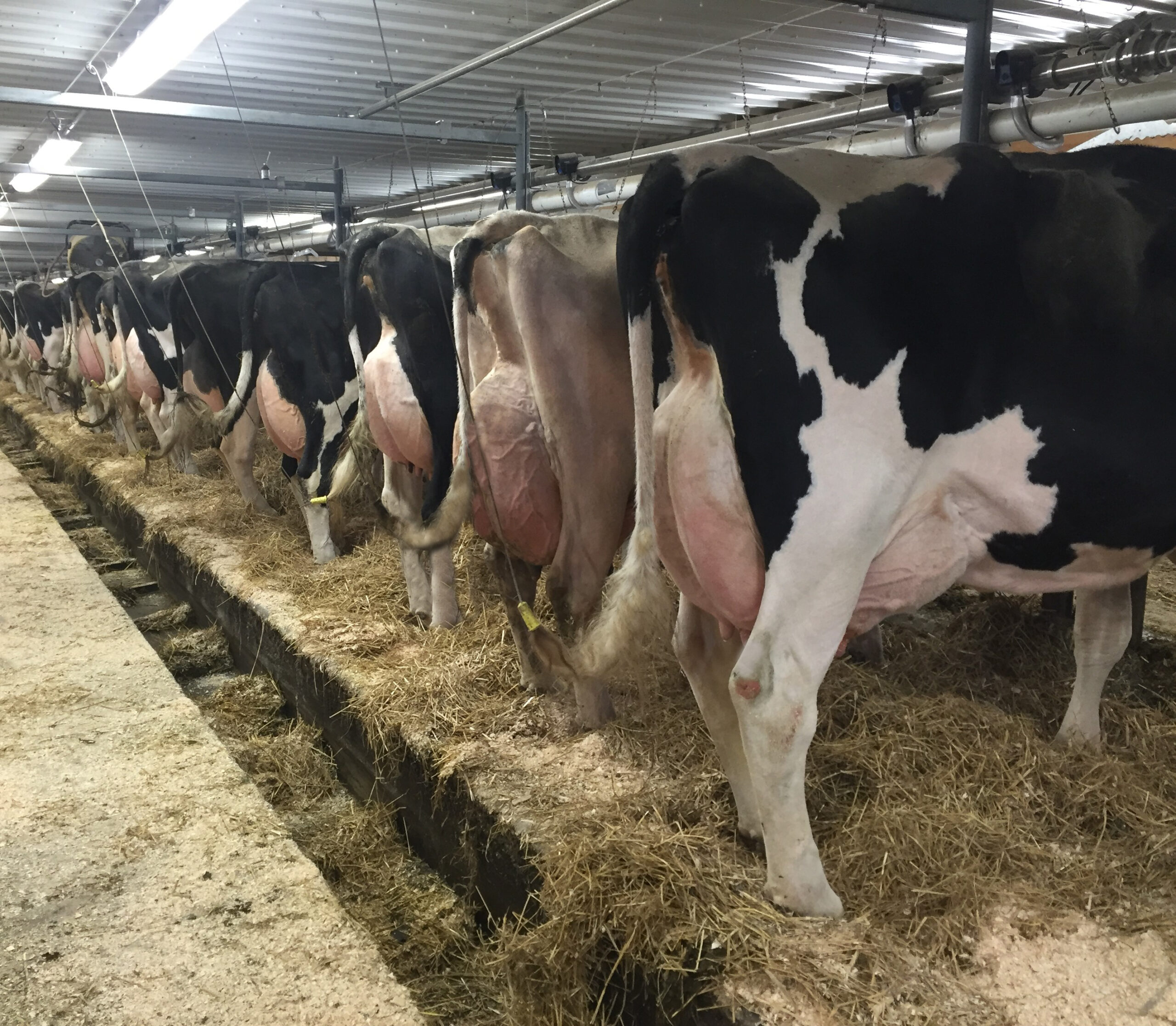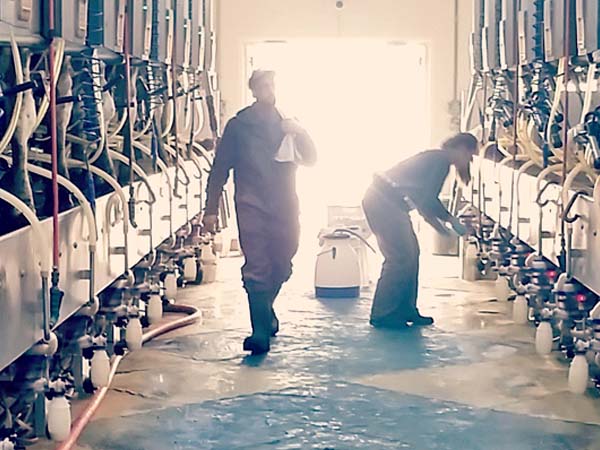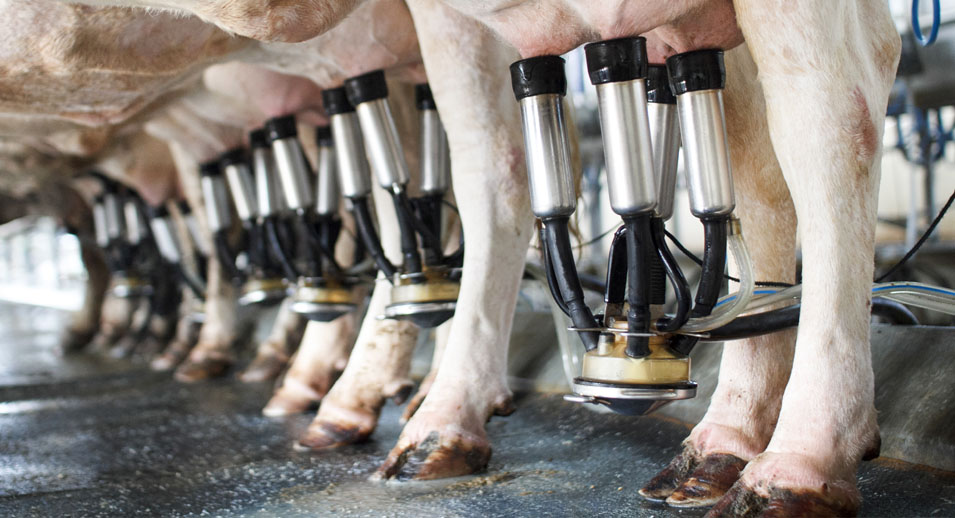How to get more milk fat?
- December 2, 2021
When it comes to raising butterfat value, it’s not just one action alone that matters, but several. So, we asked some experts for their input on this issue.

High-fat dairy products, such as cream and butter, are popular. In contrast, drinking milk, which is low in fat, is becoming less and less popular. In fact, Quebec dairy cows have a Solids Non-Fat to Fat ration (SNF/F) of 2.20, while the market needs are roughly equivalent to 2.00. This results in a surplus of non-fat solids. Add to this the Canada-U.S.-Mexico Agreement (CUMA), which limits the maximum quantity of milk protein concentrate and skim milk powder that can be exported to 35,000 tonnes. It is in this context that the Quebec Milk Producers have decided to modify the payment to producers to encourage a low SNF/F ratio as of August 1st. But how to increase the fat content of milk? Forget palm oil. Instead, go back to the basics of dairy cow management and needs.
Rumen Health
For a cow to have good milk production and a good butterfat volume, the cow must have good rumen health. This is a subject that agronomist Diane Lequin, a strategic advisor at Lactanet, knows well, as she prepared the “When the rumen goes, everything goes!” training course offered three years ago. “Good rumen health is when the rumen has the right conditions to maximize the life of the microorganisms that live there,” she explains. When those microorganisms are so happy that they multiply, it maximizes the production of volatile fatty acids produced in the rumen. And these volatile fatty acids are precursors to milk fat.
“The more volatile fatty acids I am able to get them to produce, the more fat I am able to get the mammary gland to produce,” she adds.
Lactanet uses a tool, PROFILab, to assess rumen health. This tool allows to compare de novo, preformed, or mixed fatty acids with the provincial average.
“De novo fatty acids are a good indicator of ruminal health because they are fats made directly from volatile fatty acids,” she explains.
According to Diane Lequin, feeding dairy cows is both a science and an art because a balance between energy and effective fiber must be constantly maintained. Sometimes, when forages are low in effective fiber, small amounts of chopped straw are even added to ensure the cow will ruminate. Rumination makes the cow salivate, and the bicarbonate in the saliva will help keep the pH preferred by microorganisms, at above 5.8. However, the preferred feed is still forages.
Forage quality
“There are two reasons why quality forages increase butterfat,” explains agronomist Jean-Philippe Laroche, nutrition and forage professional at Lactanet.
The first has to do with acetate. Rumen fermentation in the presence of higher quality forages will produce more acetate. “And the link between acetate, which is a volatile fatty acid produced in the rumen, and fat synthesis in the mammary gland has been very clearly demonstrated,” he adds.
The second reason is that when forages are of better quality, you can incorporate more of it into the ration because the cow is going to be able to absorb more of it. “And simply doing that is going to give us a better chance of having better rumen health and again, the link between rumen health and the production of a lot of components, mainly fat, has been shown very clearly,” he says.
It sounds simple, but you have to harvest those quality forages and preserve that quality. If excellent quality hay is poorly preserved, you’ll have poor forage to feed the cows. The same thing will happen if poor quality forage is stored well.
“You really need to have all the steps from harvesting the forage to the animal’s mouth under control to keep the nutrient value in that forage,” he says.
For a quality forage, it is recommended to harvest at 30% ADF.
Feed trough management
We know TMR, total mixed ration, but for the cow we should rather talk about the “meticulously sorted ration”, explains agronomist Gervais Bisson, expert in dairy production- robotic milking and strategic advisor at Lactanet. Before becoming an expert in robotic milking, Gervais Bisson worked for 25 years in the dairy feed industry. “We could almost say that her challenge is to sort the different types of particles in the ration,” he says of the cow’s habit of searching for concentrates first by digging a hole in the ration. The cow then ingests a lot of concentrate and little forage in a short period of time, which will lower the rumen pH. This will impact rumen bacteria and the production of volatile fatty acids. “It’s dangerous to go into acidosis,” he says. “You want to try to minimize that sorting as much as possible so that the cow, with every bite she takes, has the bite that most closely resembles the original feeding program.” That’s why if dry hay or straw is added to a TMR, it should be chopped to the same length as the silage. “When the particles are similar, the cow really has a harder time sorting and getting to the concentrates,” adds Gervais Bisson.
Another thing to watch for in order to avoid ration sorting is moisture content. If the ration is too dry, the concentrates will tend to migrate down. “At that point, you add water to the ration,” says Bisson. He recommends between 45 to 50 percent dry matter to make it harder for the cow to sort. Regularly pushing up feed also helps because having a large mound in front of her makes it less likely for the cow to sort. To check if the ration in front of the cow is well mixed, Gervais Bisson recommends using Penn State separator in about ten places in the freshly served ration and then doing the coefficient of variability. It should be as low as possible and similar when the ration is served versus when refusals are evaluated. The University of Pennsylvania has developed recommendations for this.
For tie-stall barns, attention must be paid to the feeding sequence if certain feeds are served separately. Bisson explains that it is recommended to feed dry hay, a digestable fiber, before feeding concentrates. Hay floats and tends to make a rumen mat on top of the liquid in the rumen. As a result, small grain and silage will stay in the rumen longer.
Heat stress
It is common for butterfat to decrease in the summer. It’s simply because it’s hot out. Heat-stressed cows decrease their intake, of forages in particular. Digesting forages releases heat. So, to reduce heat stress, the cow eats less. Another element is that cows stand longer to allow the wind to cool them down more. As a result, rumination also decreases.
According to agronomist Steve Adam, dairy production comfort and welfare expert at Lactanet, the number one solution is wind. Cows need to be cooled by offering wind directly on them. If the dairy farmer wants to go further to improve comfort in hot weather, they will use water. There are two types of installations: sprinklers and misters. Mist is released into the air, while sprinklers are directed onto the animal’s skin. According to Steve Adam, mist is very effective in dry climates because the air can absorb this moisture.
In Quebec’s humid climate, sprinklers are better for most situations. But it’s essential to dry cows once they’re wet. “You absolutely have to dry the cows,” he says. You have to get the wind first and then you add the water.” Some bedding types are also cooler, while others, such as straw, keep warmer. Waterbeds are also cooler than other types of stall lining.
Signs of heat stress include rate of breathing (maximum 60 breaths per minute), core temperature rising, stopping eating, standing longer, better intake at night. “If cows are able to recover at night, they will last longer,” says Steve Adam.
Genetics
The effect of genetics on milk fat is undeniable, but it is felt in the long term. However, there are certain elements that can be acted upon right away, as agronomist Mario Séguin, an expert in dairy production – milk recording and data management at Lactanet, explains. He previously worked at the Artificial Insemination Centre of Quebec (Centre d’Insémination artificielle du Québec) (CIAQ). “What can be done in the shorter term is the selection of replacement heifers,” he says. It is possible to choose not to breed for heifers from cows with low fat production. Then, sires can be selected with the goal of improving fat.
“The opportunities to select for percent butterfat have never been greater with the supply of bulls from different insemination centers,” explains Mario Séguin.
Genomic sires can further improve milk fat. The selection of heifers and the choice of sires are therefore actions to be taken quickly, but their effects will be felt in a few years.
Mario Séguin explains that there are two aspects to consider when choosing bulls: fat rate and fat yield. “Often, I combine them in the sense that it takes both yield and a good rate,” he says. Rate is the percentage of fat, while yield is the amount of fat. In 10 years, from December 2011 to December 2020, the average fat rate for Holsteins has increased from 3.88% to 4.08%. This improvement is related to better management and better genetics. Heritability, the ability to pass on a trait, is 26% for fat yield and about 50% for fat percentage. “This indicates that there is a lot of improvement that can be made through genetic selection for fat,” says Mario Séguin. It is also possible to make selection via embryos and sexed semen of high fat sires.
In addition, Lactanet offers its customers a genetic inventory of the herd to help them know if the herd could benefit from improving its test value or fat yield or if, on the contrary, the herd is among the best in the country. In addition, Compass, developed jointly by Lactanet and Holstein Canada, makes it possible to see the evolution of the genetic improvement of the herd. There are many aspects that influence butterfat. It is therefore important to make sure that they are all well analyzed.
By Marie-Josée Parent, agr. and journalist,
Le Bulletin des agriculteurs.










